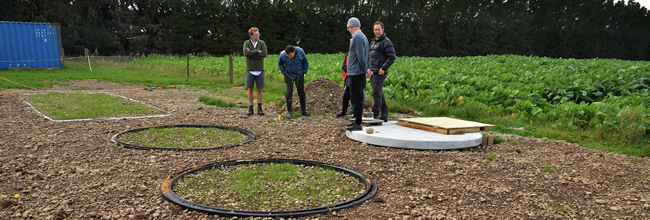Impact 3.1

Lysimeters (John Hunt).
The status of terrestrial greenhouse gas emissions and removals is understood and quantified so that changes in relation to management strategies, land-use policies and global change can be predicted.
Key issues for New Zealand’s reporting are the robustness of estimates in the annual inventory, understanding the complex processes that govern emissions and sinks, and the impact of land use. We have continued to develop new, more sophisticated methodologies to refine previous estimates with innovative technology, research and modelling across various scales and difficult forested terrain.
We met regularly with MPI and MfE to discuss research (e.g., hill country-specific emission factors that significantly reduce nitrous oxide emissions inventories) and the implications for national reporting to the Intergovernmental Panel for Climate Change (IPCC). Information was also shared via the Global Research Alliance (GRA), the New Zealand Agricultural Gases Research Centre (NZAGRC), the New Zealand Centre for Climate Change (NZCCC) and research networks.
Key performance indicator 3.1: MPI and MfE are using verified estimates of greenhouse gas (GHG) emissions and carbon storage to reduce uncertainty in national inventories
Core-funded progress for 2014/15 is reported in the achievements table, particularly under:
